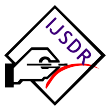Imp Links for Author
Imp Links for Reviewer
Research Area
Subscribe IJSDR
Visitor Counter
Copyright Infringement Claims
Indexing Partner
|
Published Paper Details
|
|
| Paper Title: | Debt overcome to avoid bankrupt by Sales Growth |
| Authors Name: | Keerthivasan Chandrasekaran |
| Unique Id: | IJSDR2209171 |
| Published In: | Volume 7 Issue 9, September-2022 |
| Abstract: | Once we introduce a new capital by internal or external reconstruction and Merger & Acquisition, the unrecoverable debt is recorded in the books of account beyond the non-current assets’ value, so we need to recover it by keeping a cash reserve from PAT after dividend. We should set a growth rate on each year sales turnover or revenue to keep a minimum cash reserve to repay the debt. Here we are drafting formulas, theory, and a projected income statement & Deviation Analysis between actual and projected income statement. We should address the deviation with proper reason so every year without fail we can keep a cash reserve balance. At regular interval, we should repay the debt by the cash reserve |
| Keywords: | 1. Debts: The unrecoverable debts are addressed here on bankrupt stage. Each year the debt is repaid, and it is re-calculated at each year end. 2. Revalued Non-Current Assets: All Non-Current Assets, which are saleable, are revalued at each year end for our assessment purpose. 3. Total Overcome Years: The number of years that the irrecoverable debts can be overcome out of danger of bankrupt. At end year of Total Overcome Years, the debt equals the available revalued non-current assets which saleable. 4. The Remaining Overcome Years: Once we start doing this process, the years will pass on starting from first to last year of total overcome years so the remaining year within the total overcome years is known as Remaining Overcome Years. Total overcome years are defined in definition – 3. At first year, the total overcome years are the remaining overcome years but at on-going years, the years will get reduced in the remaining overcome years from the second year of total overcome year. At every year end, Debts are recalculated after considering the repayment and it is reduced from the Revalued Non-Current Assets, which are saleable. The balance after revalued assets are known as Debt Coverable. 5. Minimum Cash Reserve: The debt coverage is divided by the remaining overcome years and residual value is known as Minimum Cash Reserve. At Every year end, this amount of part should be set aside from the PAT after dividend value. Minimum Cash Reserve = Debt Coverage/Total Overcome Year 6. Reserve Percentage: The percentage of reserve applied on the PAT after dividend of every year or projected PAT after dividend of every year. |
| Cite Article: | "Debt overcome to avoid bankrupt by Sales Growth", International Journal of Science & Engineering Development Research (www.ijsdr.org), ISSN:2455-2631, Vol.7, Issue 9, page no.1047 - 1059, September-2022, Available :http://www.ijsdr.org/papers/IJSDR2209171.pdf |
| Downloads: | 000337211 |
| Publication Details: | Published Paper ID: IJSDR2209171 Registration ID:201937 Published In: Volume 7 Issue 9, September-2022 DOI (Digital Object Identifier): Page No: 1047 - 1059 Publisher: IJSDR | www.ijsdr.org ISSN Number: 2455-2631 |
|
Click Here to Download This Article |
|
| Article Preview | |
|
|
|
Major Indexing from www.ijsdr.org
| Google Scholar | ResearcherID Thomson Reuters | Mendeley : reference manager | Academia.edu |
| arXiv.org : cornell university library | Research Gate | CiteSeerX | DOAJ : Directory of Open Access Journals |
| DRJI | Index Copernicus International | Scribd | DocStoc |
Track Paper
Important Links
Conference Proposal
ISSN
 |
 |
DOI (A digital object identifier)
  Providing A digital object identifier by DOI How to GET DOI and Hard Copy Related |
Open Access License Policy
Social Media
Indexing Partner |
|||
| Copyright © 2024 - All Rights Reserved - IJSDR | |||






Facebook Twitter Instagram LinkedIn